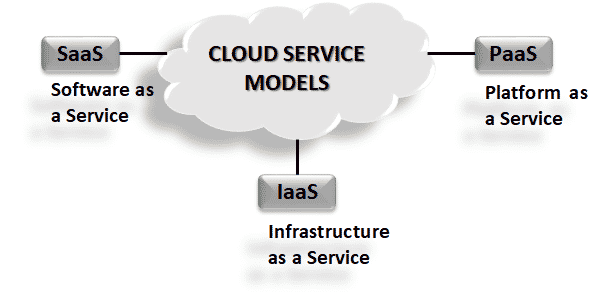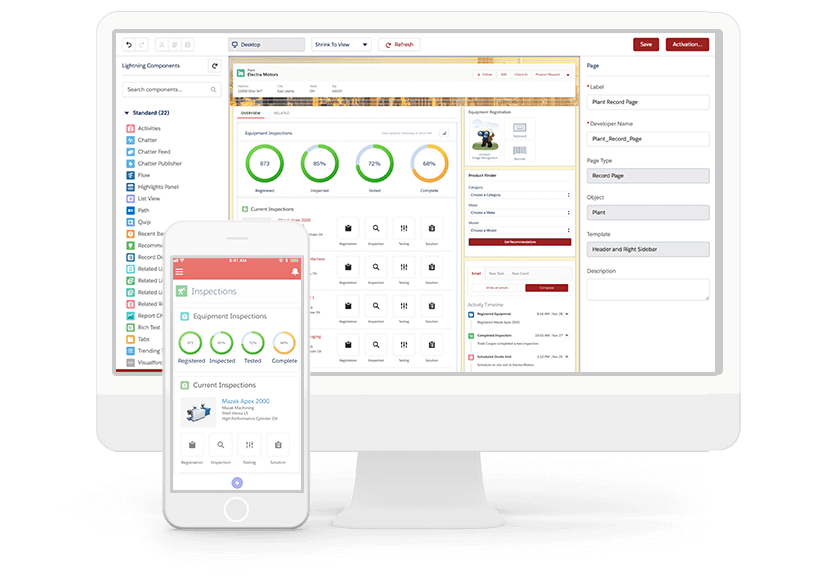As developers, we live in an era of omnipresent cloud computing, which provides better agility, lower costs, improved scalability, and continuous access to resources. The growth of cloud computing has been exponential in recent times, leading us to think of better ways to leverage the various cloud offerings. Incidentally, cloud computing was invented in the early 1960s by Joseph Carl Robnett Licklider, an American Psychologist and Computer Scientist. So why would a technology invented so long ago be experiencing such rapid growth in today’s developer climate? We explore this, the different types of cloud computing for programmers, and the need for better cloud security in today’s cloud computing tutorial.
What is Cloud Computing and Why is it important?
Cloud computing is a paradigm for delivering computing resources as a service through ubiquitous, convenient, and on-demand network access. It uses a pool of configurable computing resources that can be quickly provisioned and disseminated.
In a cloud computing scenario, the cloud provider owns and manages the resources (for example, physical servers) rather than the end-user, as is the case with on-premise computing. These resources could further include anything from browser-based software applications to third-party applications or servers.
Before the advent of cloud computing, organizations had to buy and maintain their software and hardware. With the broad proliferation of cloud computing and the various technologies that have emerged, organizations may now access various on-demand computing resources over the Internet, thanks to the growing availability of cloud-based applications and services.
Cloud computing removes the need for up-front capital costs associated with purchasing hardware and software and the setup and operation of on-premises data centers. Developers only pay for what they use (i.e., pay only for the cloud services you’ve consumed over a given period of time). This lowers the operational costs for software development teams, allows you to manage your infrastructure more efficiently, and enables programmers to respond more quickly to changes in business demands.
Read: How To Build Your Career as a Cloud Developer
What are the Benefits of Cloud Computing for Developers
Here are the benefits of cloud computing for programmers and software development teams:
- Cost: One of the key benefits of the cloud computing model is that it lowers the upfront costs and infrastructure costs for development teams.
- Accessibility: If you are using cloud services, your applications can be accessible 24 hours a day, 7 days a week.
- Scalability: It is easy and seamless to scale your web applications running in the cloud.
- Reliability: If you are using the cloud computing model, data backup and recovery are cheaper and uptime is more reliable.
- Security: Most cloud service providers provide a comprehensive set of policies, technologies, and controls that improve security for your applications and data residing in the cloud.
What are the Downsides of Cloud Computing?
Some of the downsides of the cloud computing model are:
- Higher Operating Costs: Higher ongoing operating costs even though the initial expenditure is less.
- Security Concerns: Even though there are several security measures adopted by the cloud service providers, cloud remains vulnerable from security threats.
- Connectivity: The cloud computing model can only work if you have stable Internet connectivity.
- Vendor lock-in: This is yet another challenge where it might become extremely difficult to change cloud computing service providers once you have adopted one.
Read: Why Should I Move to the Cloud?
What are the Types of Cloud Computing Services?
There are three primary cloud computing service models:

The Cloud Service Models
Infrastructure as a Service (IaaS)
IaaS allows users to have cloud-based access to storage, servers, networking, and other computing resources in the cloud. While the user is still in charge of maintaining their applications, data, middleware, and so on, IaaS offers an automated and scalable environment that provides a high degree of control and freedom. IaaS providers offer virtual server instances, storage, and APIs for moving workloads to virtual machines (VM). The users can start, stop, access, and configure the virtual machines and storage as needed.
Platform as a Service (PaaS)
The PaaS model allows you to build applications on the cloud without being concerned about installing, configuring, and maintaining infrastructure in the cloud. In this model, the cloud providers host development tools accessible through APIs or web portals. Some examples of the PaaS providers are AWS Elastic Beanstalk, Salesforce’s Lightning Platform, and Google App Engine.

Salesforce’s Lightning Platform
Software as a Service (SaaS)
SaaS is yet another model that delivers software applications as a service. As long as you have internet access, you can access SaaS apps and services on your computer or mobile device. SaaS providers provide cloud-based applications that users can access on-demand without installing or maintaining the software. SaaS providers include Google Docs, GitHub, Slack, and Microsoft 365.
Read: How to Choose a Cloud Provider
What are the Types of Cloud Environments?
Below is a list of the three primary types of cloud environments.
Public Cloud
In a public cloud model, you would typically have a third-party cloud service provider responsible for providing cloud services as long as you’re connected to the internet. The benefits of adopting a public cloud are cost-effectiveness and improved efficiency. Since public clouds leverage economies of scale, they are often less expensive than private, hybrid, or even on-premises computing models. You’re not required to pay for services that you’ve not consumed. Moreover, you don’t have to manage and maintain the physical infrastructure.
Private Cloud
A private cloud enables a company to construct and manage its cloud infrastructure. This paradigm combines the flexibility and convenience of the cloud with the administration, security, and control traditionally associated with on-premises data centers. VMware and OpenStack are two popular private cloud technologies and manufacturers. Since it is hidden behind the company’s firewall, the private cloud enables enterprises to reap some of the benefits of the public cloud without worrying about losing control over their data and services.
Hybrid Cloud
A hybrid cloud blends the capabilities of both public cloud and on-premises private cloud services. The objective of a hybrid cloud is to provide an automated, and scalable environment that makes use of all the benefits of public cloud architecture while maintaining control over your mission-critical data.
What is Cloud Security and Why is it Important?
Cloud security entails the management of people, processes, and technology, as well as the development of a set of comprehensive rules to protect data and applications that reside and operate on the cloud. With the surge in the use of cloud computing globally (especially after the outbreak of the COVID-19 epidemic), organizations worldwide have been considering a slew of cloud-based services.
The Need for Cloud Security
With the proliferation of cloud-native applications and services, the cloud infrastructure has become more complicated, resulting in security flaws that might expose your applications, systems, and data to malicious attackers. The most vulnerable areas in your cloud infrastructure include data access, source code, middleware, operating system, and network. This has necessitated the need for a robust security process to protect your critical assets.
Cloud security refers to a set of security mechanisms intended to safeguard cloud-based infrastructure, applications, and data. It provides a secure way of gaining instant access to your data and guarantees that only authorized users have easy access to your data and applications running on the cloud. It enables the safeguarding of a company’s data residing in the cloud from distributed denial of service (DDoS) attacks, any unauthorized access or usage, hackers, viruses, and so forth.
Summary of Cloud Computing
Cloud computing will undeniably continue to evolve and flourish in the years to come. This is mainly due to its possibilities for businesses and independent developers, researchers, educators, and students alike. Good knowledge of cloud computing services can help you make informed decisions on making the most of what the cloud offers.


